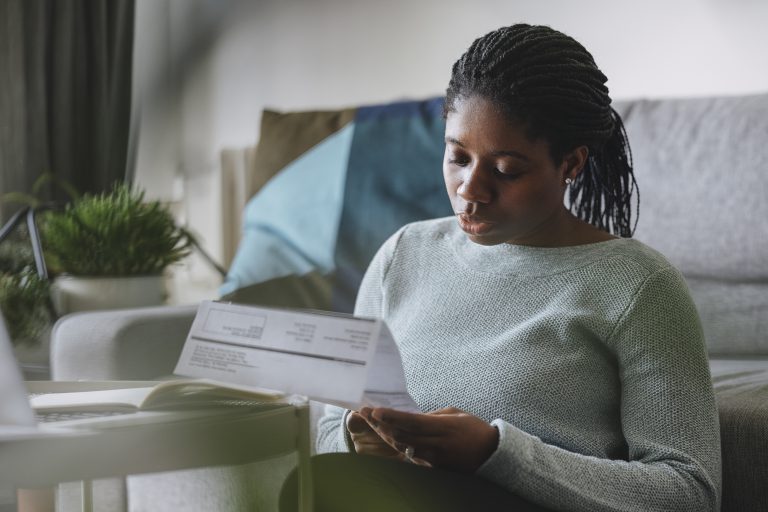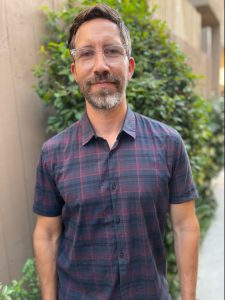Energy Burden and Weatherization Across Los Angeles County
For low-income families in Los Angeles County, energy costs are a significant financial drain. Low-income households spend on average, threefold more of their income for energy than their high-income counterparts. Low-income homeowners are more likely to occupy less efficient older homes in disrepair. Often, these homes are poorly weatherized, which can mean having insufficient insulation, air leaks around doors and windows, cracked walls or roofs, or inefficient heating and cooling systems. These households also tend to have less stable revenue streams and fewer resources to address these issues. The high upfront cost of upgrading an inefficient home further prohibits low-income homeowners from making necessary changes that could reduce utility expenditures. Energy wasted through inefficiency also contributes unnecessarily to global climate change. Although low-income households have lower per-capita energy consumption and thus contribute less to the climate crisis, they are more likely to suffer its damaging effects. The environmental justice movement has emphasized that fair treatment means that no community should bear unequal share of negative environmental outcomes.
Feeling the Burden
Energy Burden is generally defined as the portion of household income spent on energy utilities. A household is generally considered ‘energy poor’ if it is spending more than 6% of its income meeting energy needs. In Los Angeles County, on average, energy burden grows dramatically as household income declines. As shown in the graph to the right, households earning between 30-60% of the state median income (SMI) may have an energy burden near 4% of household income, while those households making 30% or less of SMI can spend more than 10% of their income on energy.
Energy poor households are more likely to experience ‘energy insecurity’, which is understood as ‘the inability to adequately meet household energy needs.’ Chronic energy insecurity is long-term and usually centers around a household’s ability to consistently make gas, electric, or other utility payments, while acute energy insecurity can result from faulty equipment, deteriorating infrastructure, or climate driven weather events like hurricanes or wildfires.
Disconnected Populations
For most families, the most dire consequence of energy insecurity is a service interruption. Researchers looking at the Residential Energy Consumption Survey (RECS) found that in 2015, 3% of US households had their power shut off, while an additional 15% received disconnection letters. These figures indicate that indeed many households are facing adversity. As with most environmental justice issues, low-income households and communities of color are often those most at risk for adverse consequences. Families with children and renters are most likely to receive disconnection notices and experience service disruptions. During the winter and summer months – when outdoor temperatures reach their extremes – hypothermia and heat stress can result from such an interruption.

Chronic cardiovascular, respiratory, and renal illnesses are also worsened by disruptions in utility service, often driving individuals into hospital emergency rooms. The elderly are particularly vulnerable during seasonal extremes because they often live on fixed incomes, live alone, and have more health complications. Children in urban and low-income areas are more prone to asthma and therefore may require more energy for a stable temperature and proper ventilation. Overall, insufficient household energy has been linked to excess deaths in summer and winter; cardiovascular, pulmonary, and respiratory problems; poor sleep, anxiety, depression, and stress.
Energy Burden in Los Angeles County
Countywide, many of the neighborhoods that suffer the biggest energy burdens are in low-income neighborhoods in central and southern areas of Los Angeles. However, there is also significant energy burden in certain areas on the outskirts of the county. Lancaster, Palmdale, and the Northeast Antelope Valley are three such communities. In terms of the most energy burdened communities in Los Angeles, they rank 2nd, 4th, and 6th respectively. Within the county, all three communities are in either the lowest or second lowest income quintiles. Hispanic households make up the largest ethnic groups in each of these districts. The high energy burden in these communities is related to the fact that they endure some of the greatest temperature extremes in Los Angeles County. This past summer Lancaster set a record with 58 days of temperatures above 100 degrees.
The map below shows the percent of households making below 60% of the State Median Income who are considered energy burdened across LA County neighborhoods. Hover over a neighborhood for additional information about how many households fall within that income category.
Additionally, from an environmental justice perspective, it is telling that the wealthiest areas of the county benefit from the cooling effects of dense tree cover while the areas with the highest energy burdens lack that coverage. Many cities are beginning to consider such issues of environmental justice as they develop programs to aid low-income households.
Help for Households
Fortunately, the federal government has recognized energy burden as a critical issue facing many low-income communities and provides several resources to remedy the issue. The first is direct financial assistance, which includes temporary measures like bill forgiveness and other monetary aid that can help residents offset the energy burden. Another approach is subsidizing more sustainable improvements such as the installation of energy efficient appliances, rooftop solar, and home weatherization.


One program that embraces both methods is the federal Low-Income Home Energy Assistance Program (LIHEAP). The LIHEAP program offers aid to low-income households to offset utility costs and provides funds during crisis situations such as a disconnection or natural disaster. The LIHEAP Weatherization Program further aids low-income households by providing services to increase energy efficiency, lower costs, and ease the energy burden. These services may include weatherization, weather-stripping, caulking, insulation, systems repair, water heater blankets as well as the installation of energy efficient lighting and smart thermostats.
Maravilla Foundation
The Maravilla Foundation is a non-profit organization that delivers LIHEAP utility assistance and weatherization services to low-income households in the greater Los Angeles area. Since 1957, the Maravilla Foundation has weatherized over half a million homes. In 2020, The Maravilla Foundation weatherized 1,337 homes and provided over $8 million in payment assistance benefits to low-income households. Over 24,000 children, elderly, or disabled individuals benefited from Maravilla’s efforts in the community. Maravilla services are available to those in select zip codes making 60% or less of the state median income. Coupling these programs with simple behavioral strategies to conserve energy can have a compounding effect on efficiency improvements.
Looking forward, evidence suggests that the energy burden of low-income households will continue to increase. As global climate change stresses natural systems, producing more extreme weather events, lower income households will an increasingly difficult time meeting their energy needs. We must continue to support our neediest communities through strategies like those outlined above if environmental justice is to be realized.


Dan Oberle
Dan Oberle is pursuing a Master of Urban Planning degree at The Price School. Prior to his arrival at USC, Dan worked as a documentary film editor in Los Angeles for many years. At USC he hopes to focus on housing and how the built environment influences cities as complex, social-ecological systems. He believes that design and data can be powerful tools to address the hidden inequities embedded in these systems. Dan holds a bachelor’s degree from Florida State University.

Aileen Qin
Aileen is a Master of Urban Planning (Class of 2022) student at the USC Sol Price School of Public Policy with a concentration in environmental planning and analysis. She obtained her undergraduate degree in environmental studies with a minor in gender and sexuality studies from Rhodes College in Memphis, TN. Aileen’s interests lie in GIS mapping and public parks and her dream is to utilize GIS technology to create accessible greenspaces that serve as solutions to a wide variety of community problems. She is originally from Houston and enjoys hiking, farmer’s markets, and the color pink!
Sources
Brown, Marilyn Ann, Soni, Anmol, Lapsa, Melissa Voss, & Southworth, Katie. 2020. Low-Income Energy Affordability: Conclusions From A Literature Review. United States. link
Gosselin, Peter. (2004, December 12). The Poor Have More Things Today — Including Wild Income Swings, Latimes.com link
Jessel S, Sawyer S and Hernández D (2019) Energy, Poverty, and Health in Climate Change: A Comprehensive Review of an Emerging Literature. Front. Public Health 7:357. doi: 10.3389/fpubh.2019.00357. link
Kizla, C. KTLA News, (2021, September,6). Lancaster sets new record: 58 days this year above 100 degrees. link
Low Income Energy Solutions. Office of Energy Efficiency & Renewable Energy. link
William M. Rohe, Spencer M. Cowan & Roberto Quercia (2010) Supporting low-income homeowners: lessons from a program to coordinate weatherization and rehabilitation services, Housing Policy Debate, 20:3, 523-546. link
Maravilla Foundation. (n.d). Maravilla Foundation. link
Photo Attributions
Cover Photo: Photo courtesy of Istock/brazzo
Photo 1: Photo courtesy of Istock/Drazen Zigic
Photo 2: Photo courtesy of Istock/miniseries
Photo 3: Photo courtesy of Istock/photovs
Photo 4: Photo courtesy of Istock/artursfoto

